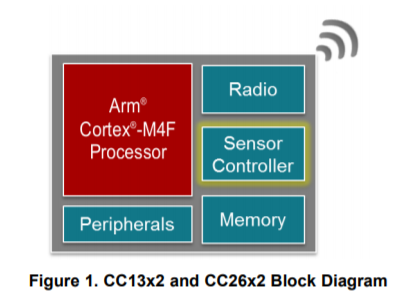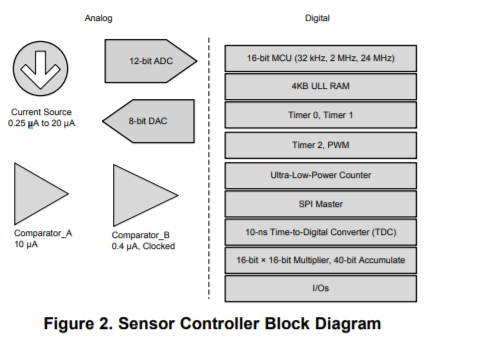SSZT677 june 2018 CC1312R , CC1352P , CC1352R
People mostly associate smart meters with electric meters (e-meters), but after seeing the benefits that smart meters brought to the e-meters market – delivering real-time consumption data to consumers so they could manage their usage and fighting against theft through tamper detection – consumers want the same benefits in water and gas flow meters.
One key difference between e-meters and flow meters is the power source. E-meters almost always have a power source; therefore, power consumption is not a key concern. Flow meters rarely have a source for power and will need to be battery operated. A TI ultra-low-power sensor controller can help you differentiate today in the flow meter market by designing the lowest-powered battery-operated smart meter application.
In most flow meter applications, the main Arm®-M4F application microcontroller (MCU) may only need to transmit measurements a few times a day. The main MCU can remain on standby in-between transmissions, which can reduce the average current consumption of the system significantly. It’s imperative to monitor the flow of water or gas at all times, which is where you can employ a separate 16-bit MCU ultra-low-power coprocessor optimized for handling low-power measurements while the main MCU is on standby. The SimpleLink™ CC1312 and CC1352R/P device platform (see Figure 1) and its ultra-low-power sensor controller give you the ability to achieve low power and manage the application, metrology and radio-frequency (RF) communication, all in one chip.

The SimpleLink sensor controller is a dedicated 16-bit central processing unit (CPU) core designed to be very low power with respect to active mode, standby mode and startup energy. As you can see in Figure 2, the sensor controller consists of analog and digital peripherals that have been optimized to achieve ultra-low power.

Harnessing these peripherals and 2MHz clock mode make this controller a good fit for inductive sensing applications to achieve ultra-low power: for example, using the inductive measurement principle, it’s possible to achieve an average current consumption as low as 3.9µA at 100Hz. To learn more and see examples of flow meter applications, check out" Single-Chip Flow Metering Solution with the CC13x2R Wireless MCU."
Additional resources:
- "Ultra-Low Power Designs with the CC13x2 and CC26x2 Sensor Controller."
- "Getting Started with the CC13xx and CC26xx Sensor Controller."
Buy a LaunchPad™ development kit